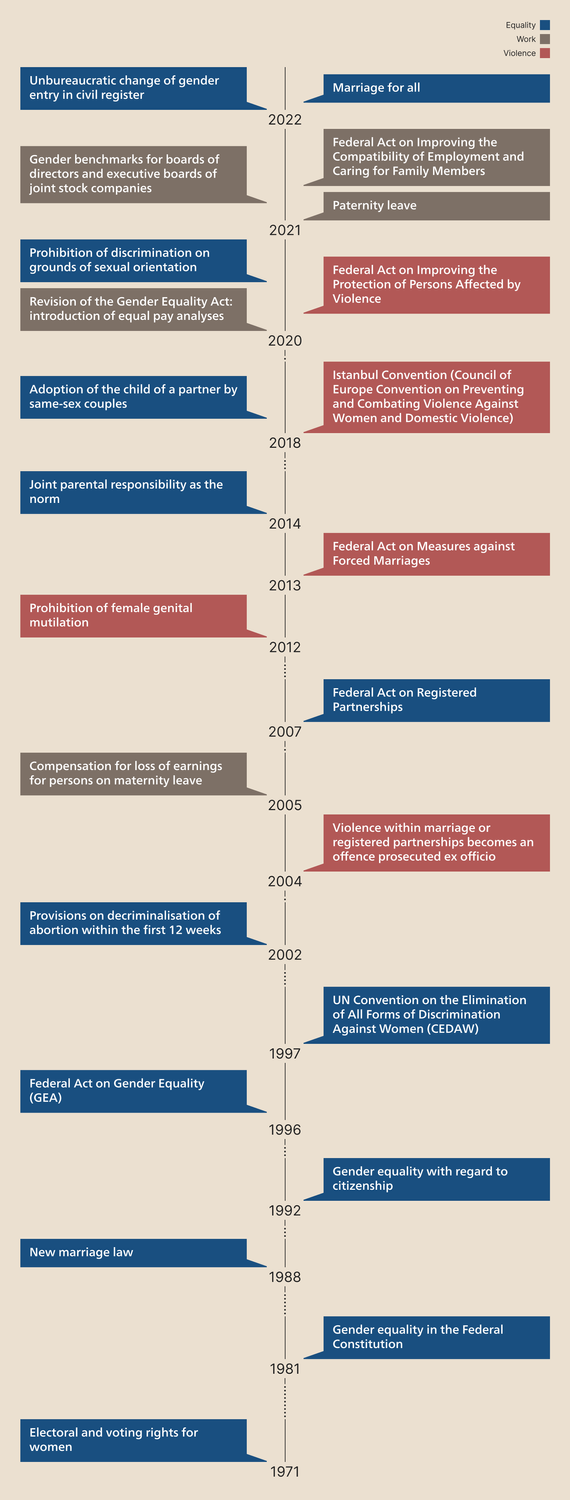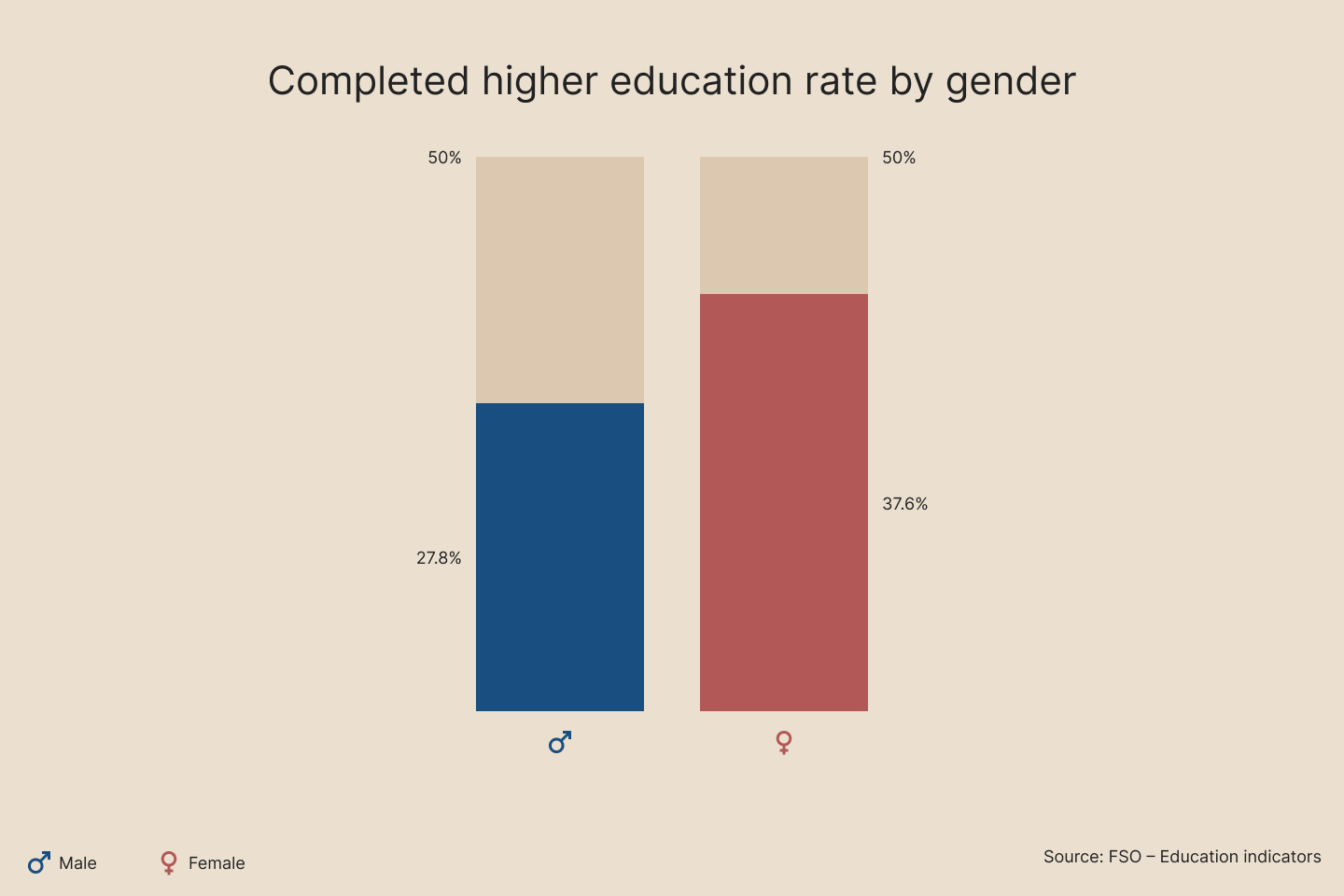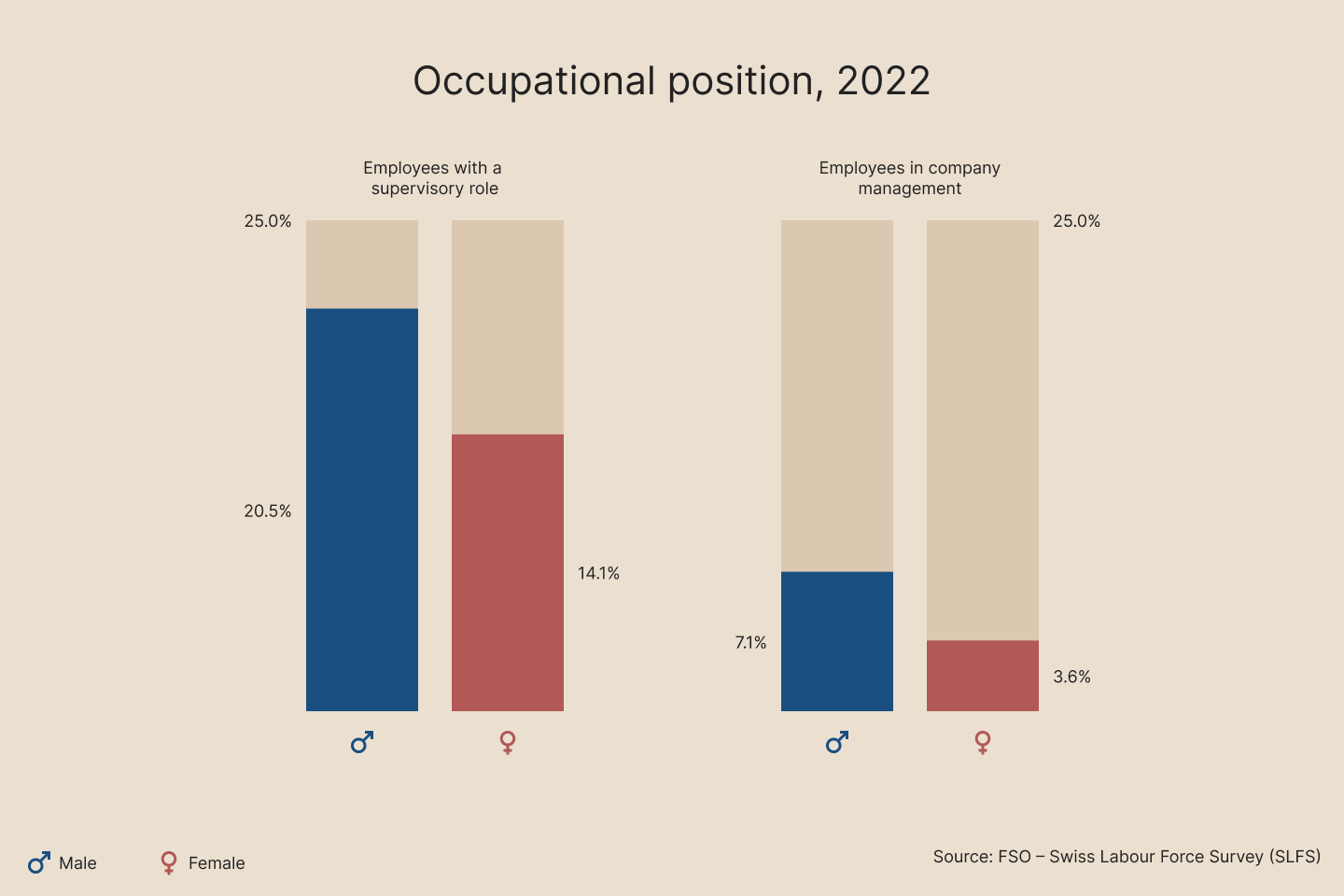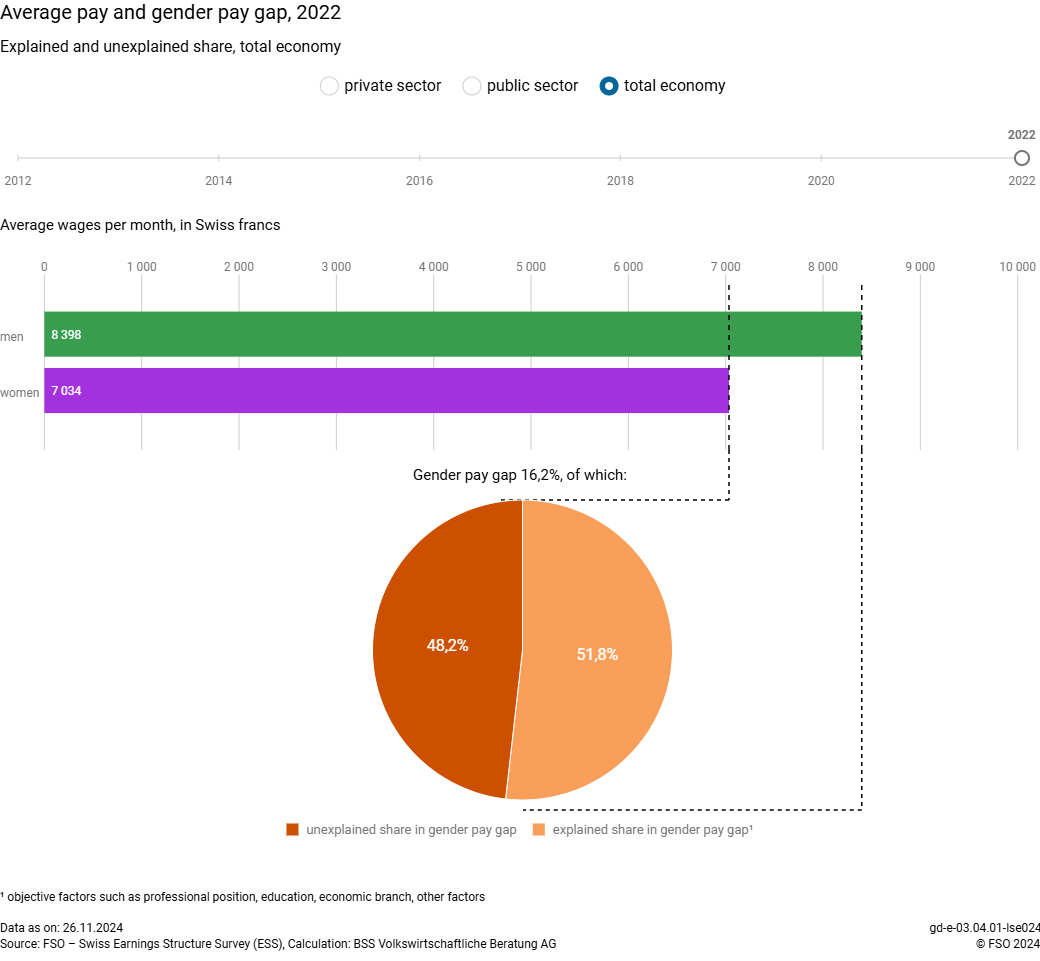Facts and figures on gender equality
Since the introduction of women’s suffrage, Switzerland has made a great deal of progress in gender equality. However, a look at the statistics shows that there is still a lot to do in some areas. Key facts and figures at a glance.
The road to equality is long and in many areas women and men are still not equal to this day. Important equality milestones in Switzerland are the introduction of women’s right to participate in elections and popular votes in 1971, the inclusion of the article on equality in the Federal Constitution in 1981 and the introduction of the Gender Equality Act in 1996 or its revision in 2020.
- Overview of gender equality in Switzerland
- For more information on the legal aspects of equality, see Federal Constitution and Gender Equality Act
Milestones in equality
Since the introduction of women’s right to vote, important milestones have been reached on a legal basis:

Statistics on equality
Various figures can be used to measure the extent to which equality has been achieved. The Federal Statistical Office (FSO) collects indicators of this kind at regular intervals and compiles the most important results and trends.
Education
The education level of women and men is increasingly comparable. Career and study choices continue to be gender-specific. However, differences are slowly decreasing.

Employment
Women’s employment has strongly increased since 1991. Women work more often in part-time and occupy less often positions of responsibility than men.

Balancing work and family
Women adapt their employment situation largely to their family situation. Most mothers work part-time, while most fathers work full-time. Two thirds of families make use of childcare provided outside the family. More on the balance of work and family life at the FSO.

Unpaid labour
Unpaid labour (in particular domestic and family-related work) accounts for a significantly higher share of total working hours for women than it does for men. The share of unpaid labour by men has increased since 2010.

Wages
On average, women earned 18 per cent less than men in 2020. More on the subject of the background to wage inequality and the FSO wage statistics.

Politics
The proportion of women in parliaments and governments is lower than that of men at the federal, cantonal and communal levels. More on politics at the FSO.
Violence
Men are more often victims of violence in the public sphere, while women suffer mainly from domestic violence. More on the Extent and legal situation with regard to violence against women and the details on violence at the FSO.

Measuring the success of the work of the Confederation
Every four years, the Confederation sets goals for its work and the work of the administration in legislature objectives. It reports annually to Parliament on the achievement of these objectives. Legislature objective 8 for the period 2019–2023 reads: «Switzerland promotes social cohesion and gender equality.» The Federal Statistical Office regularly measures the achievement of this objective:
- Labour force participation rate
- Pay gap by gender
- Burden of employment and domestic and family-related work
- Domestic violence
The role of the Federal Office for Gender Equality (FOGE)
The FOGE is committed to equal pay, equality of LGBTIQ persons, protection against violence against women and domestic violence and sexual harassment in the workplace. It promotes projects and organisations with the aim of achieving gender equality in the workplace, improving the work-life balance or strengthening the prevention of violence against women and domestic violence.
The Confederation is committed to gender equality in Switzerland in many other areas. Various federal offices for issues of gender equality policy.
Publications

Gender equality in Switzerland
Gender equality has not yet been achieved. Switzerland is committed to equality before the law and in practice in various areas.

